Back in June 2020, I was excited to introduce TROUT…. Don’t panic, I hadn’t suddenly become an advocate of stocking! TROUT was the rather dubious acronym I came up with for a project funded via the Biodiversity Enhancement Programme of Yorkshire Water – Tackling Resilience on Underperforming Tributaries. You can read the background blurb in the link above. Whenever a WTT Conservation Officer assesses a waterbody during an Advisory Visit or similar, they are using expert judgement to identify issues that might cause population bottlenecks (see image below). Essentially, for TROUT, I wanted to improve habitat within and along a series of smaller tributaries to increase the chances of successful spawning and better fry and parr survival, to remove those bottlenecks; a little bit of TLC or Tributary Loving Care! OK, I’ll stop.
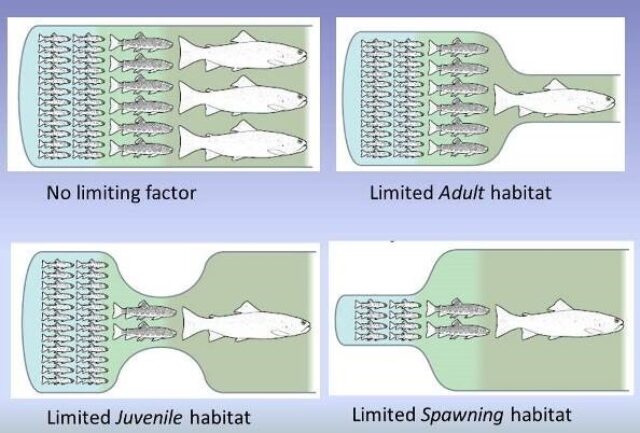
Monitoring success was a big consideration in the award and because the project was funded for 5 years, with multiple becks across different catchments assessed (by electro-fishing) alongside several control becks, the aim was to generate relatively meaningful and robust data on trout numbers and corresponding fork lengths to tell us something about the population structure. In the intervening years, I have worked up a time-series of developments at Dauber Gill primarily because that little beck was subsumed into TROUT after an initial phase of EA Fishery Improvement Programme support, so the dataset was up and running. Also, some data contributed to the MSc thesis of Lizzie Thomas, and she wrote us an interesting blog summarising her findings on whether habitat restoration is effective for brown trout and Atlantic salmon.
Well, with the ever-effervescent Freddy Weaver and numerous volunteers from various angling clubs, I have just completed the annual surveying and finished working up the catch ’22 data. Considering the ‘boil-in-the-beck’ drought conditions for most of the spring and summer, I’m pretty chuffed!
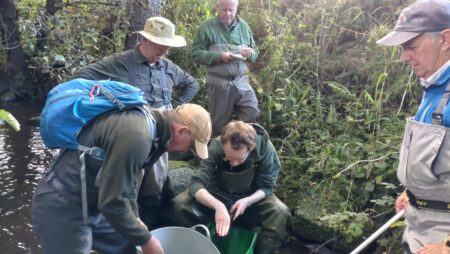
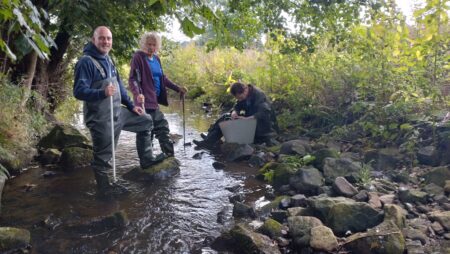
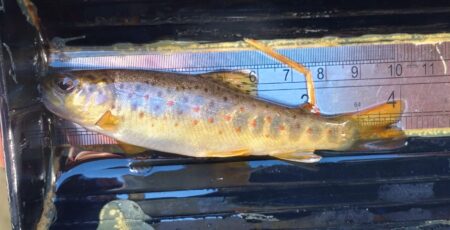
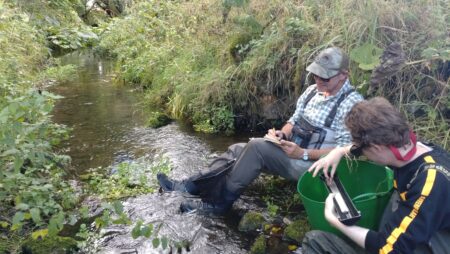
The figure below summarises data for young of year trout (YOY) only. I have plotted proportional change from a pre-intervention phase to standardise across becks, so each beck dataset effectively ‘starts’ at zero. An increase in numbers will result in positive change and hence an upward trend. A decrease in numbers will result in negative change and a downward trend. The linear trendlines are plotted to aid visualisation – I wouldn’t expect there to be a linear relationship per se. Rather, after an initial boost in numbers (hopefully) I would expect to see a plateau as saturation for the habitat available or other limiting factors take hold. That’s probably more likely to be visible after the 5 years, rather than at 2 – 3 years post intervention as we are now. Remember, the TROUT project officially started in 2020 so the majority of pre-intervention data were collected then.
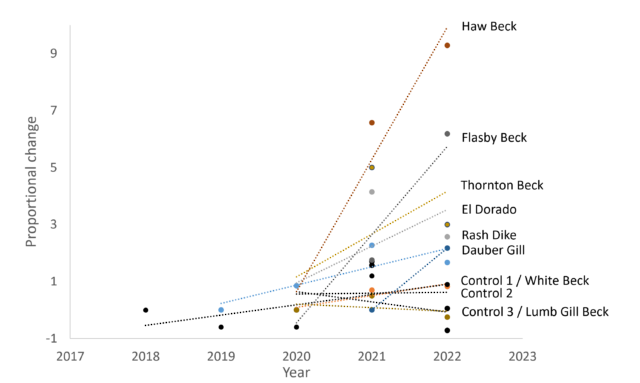
If we focus on the control becks first (black data points and lines; I don’t want to name and shame them just yet but at least one of them will be getting some serious TLC next year), there is noise in the data as we might expect, driven by good and bad years. Generally, 2021 appeared to be a relatively good year for fry production after several poor years in my patch. Of the three controls, there are three different trends: Control 2 flatlined ie no discernible change over time, Control 3 showed a mild downward trend, and Control 1 a mild upward trend.
If we now look to the specific project sites, poor old Lumb Gill Beck (Wharfe) is stuck in limbo at the moment. I have not yet made any improvements for various reasons, so it is effectively still in a pre-intervention phase and the mild negative trend reflects the lack of TLC to date. White Beck (Wharfe) has shown modest improvement and is continuing on an upward trend. Indeed, it is one of the few sites where I have historic data from the EA from the 1990s and there is evidence it is steadily returning to the sorts of numbers of trout that were evident 30 years ago! There is now a better spread of year classes taking advantage of the mosaic of habitat, and one or two surprisingly large individuals.
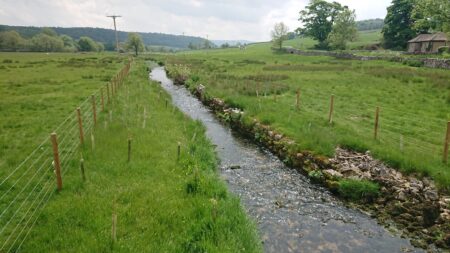
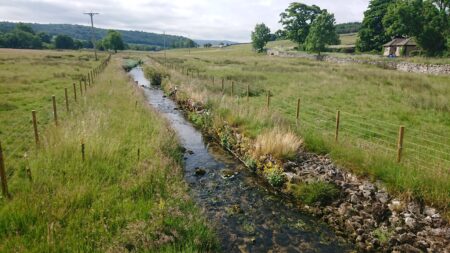
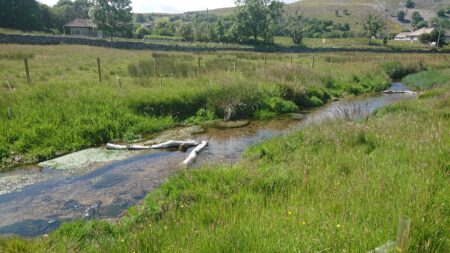
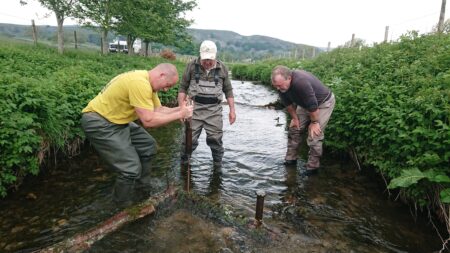
Thornton Beck, El Dorado, and Dauber Gill all show continuing upward trends from pre-intervention status, but the numbers of YOY were not as high in 2022 when compared to the ‘good year’ of 2021. Each of those was severely challenged this year by low flow conditions; scope still to increase resilience further. Numbers of parr were up though, so more fish made it past the vulnerable stages and the first winter or two.
Haw & Flasby becks show stratospheric upward trends with even better numbers of YOY trout than 2021 and up to 10x the number of YOY trout compared to the starting baseline. Both of these systems had reasonably well protected and developed riparian zones but lacked woody material within the channel to sort substrate and provide refugia. Both had sufficient mature tree cover along them to topple or lay some in to work their magic, plus abundant shading to better buffer water temperatures. So the missing and seemingly key ingredient was wood in the channel.…we can’t stress it enough: wood is good!
Have I managed to ‘tackle resilience’ on these two as I said I would do? I think I’ve made a good start, but the final 2 years of the project will tell.
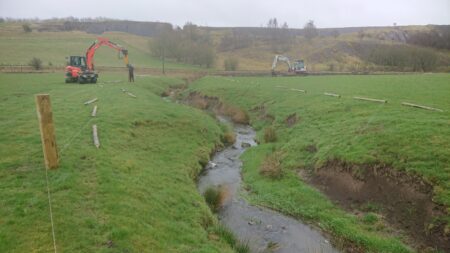
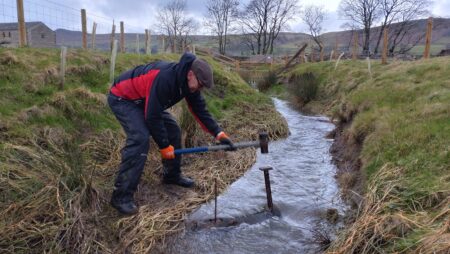
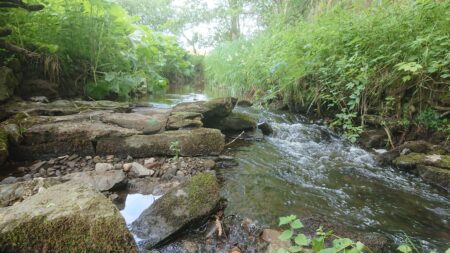
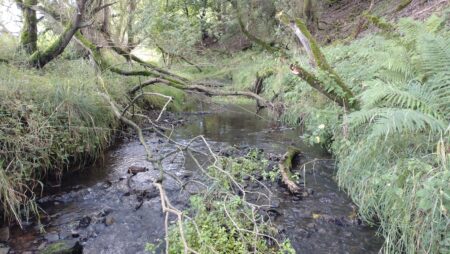
I’ve included a figure specifically for the Flasby Beck data, below. The number of trout in each size bin (eg all trout between 60 – 69mm are counted in size bin 60) are plotted for each year. In a healthy population, we would expect a series of bell-shaped curves, ever-decreasing in height reflecting lots of YOY, fewer 1+ fish, and ever fewer older fish. At the time of year that I monitor, the YOY (0+) fish are typically ~80mm though could be 60 – 100mm depending upon feeding conditions, stressors and competition etc. It becomes increasingly difficult to attribute age later on as the size distributions become blurred. Looking back to 2020 (blue bars; pre-intervention), the population is flat: relatively few YOY and similar numbers of 1+/2+ fish, indicating (at least) one of those bottlenecks I mentioned at the outset. However, post interventions and now in 2022, the numbers follow the expected pattern indicating a much more sustainable and resilient population.
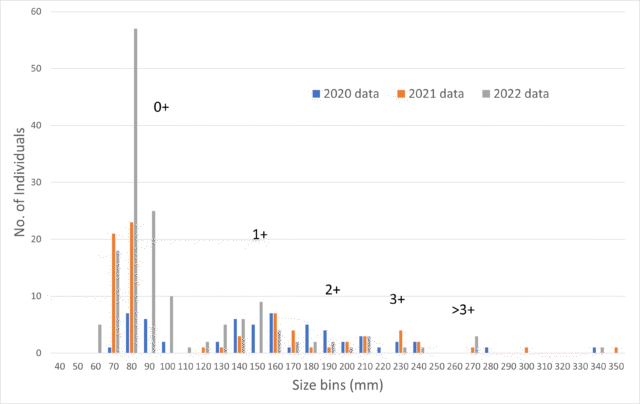
Rash Dike is the final beck, a late substitute into the programme so I only have a single year pre & post-intervention. Also, it was a ‘high’ baseline year (2021) from which to start, so I was very pleased to see that we’d bolstered YOY numbers by ~3x in 2022. What did we do in between time? A perched pipe culvert near to the confluence with the Nidd was challenging to fish passage and drowned out ~40m of what should have been prime spawning habitat, so we took that out and introduced woody deflectors to kick the flow around elsewhere and clean up the abundant gravel. Build it, and they will come….
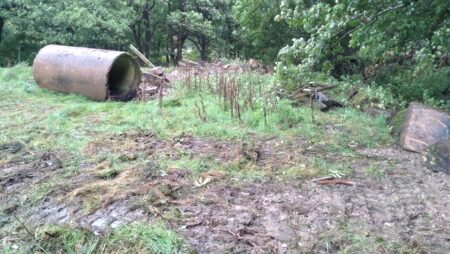
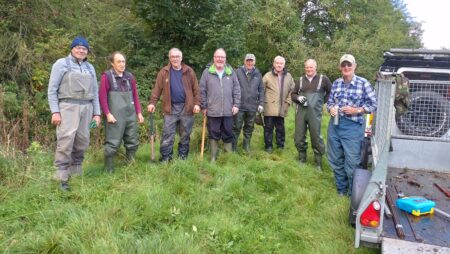
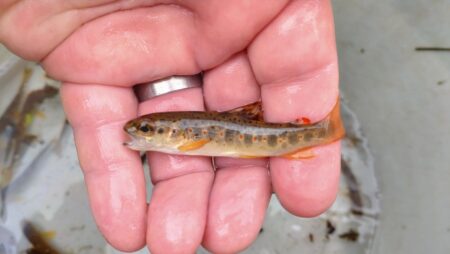
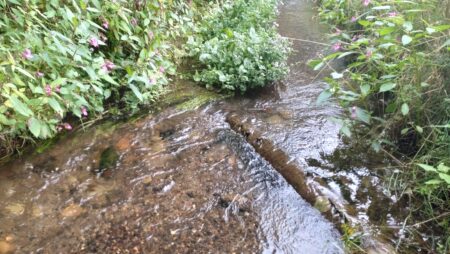
Looking back over the metrics that I need to keep tabs on, across the project sites ~9km of channel habitat and riparian zone have been improved with fencing, woody and gravel additions, and/or tree planting, and low-head weir or culvert removals have opened up ~6km. All in all, good news from the perspective of our sentinel species, the trout, and therefore a good indicator that the rest of the ecology might be doing better too!
But there are other aspects to the project that I should touch upon. As with most things WTT, we get things done by working in partnership with other organisations and by engagement. To date, I have engaged with 21 different organisations (mostly other trusts and angling organisations) and those dedicated folks have contributed >1300hours of their time to the project either with the ‘muck & bullets’ graft in-channel or monitoring thereafter. Hopefully skills and knowledge picked-up whilst working with me will be transferred beyond the direct reach of the project.
In addition, the core funding from the Yorkshire Water award obviously enabled the specific works on each beck, but there has been much value-added bolting-on of extra works and extending reach (for example via Fishery Improvement funding via the EA), or even simply idea generation and scoping for future funding… job for life! A special mention must be made of the West Yorks branch of Salmon & Trout Conservation which has supported the project both financially (via monies raised at the Great Yorkshire Show) and via key members contributing their time to help.